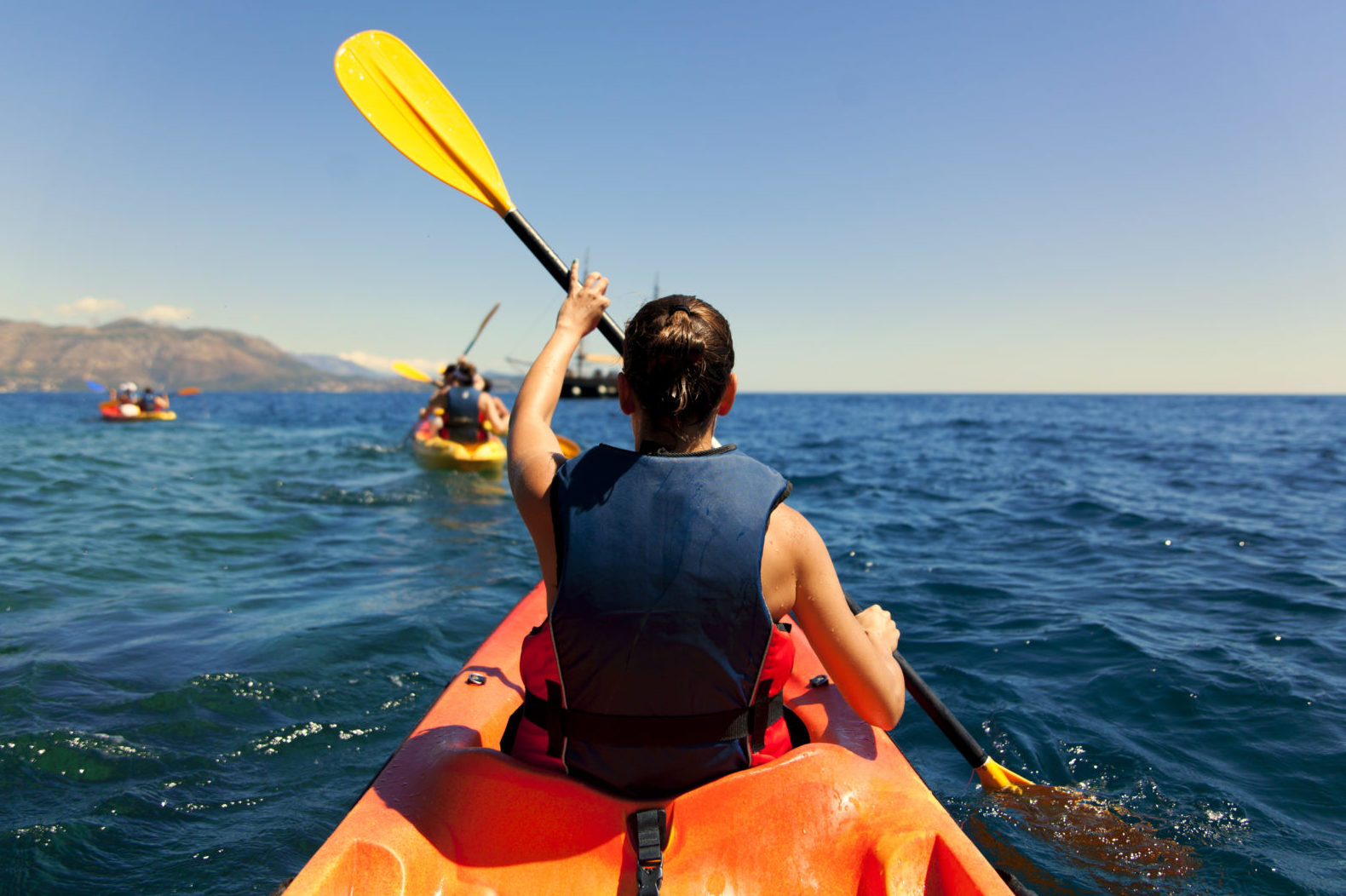Contents
If you’ve ever been intrigued by the idea of gliding across the water, feeling the gentle rhythm of your paddle, then kayaking might just be the adventure you’re looking for. Whether you’re a seasoned outdoors enthusiast or a novice seeking new experiences, this article will serve as your trusty guide to the world of kayaking. From choosing the right kayak to mastering basic techniques and safety tips, we’ll unlock the gateway to your own personal water-bound odyssey. Embark on this journey with us as we explore the beauty and excitement of kayaking in the mainstream.
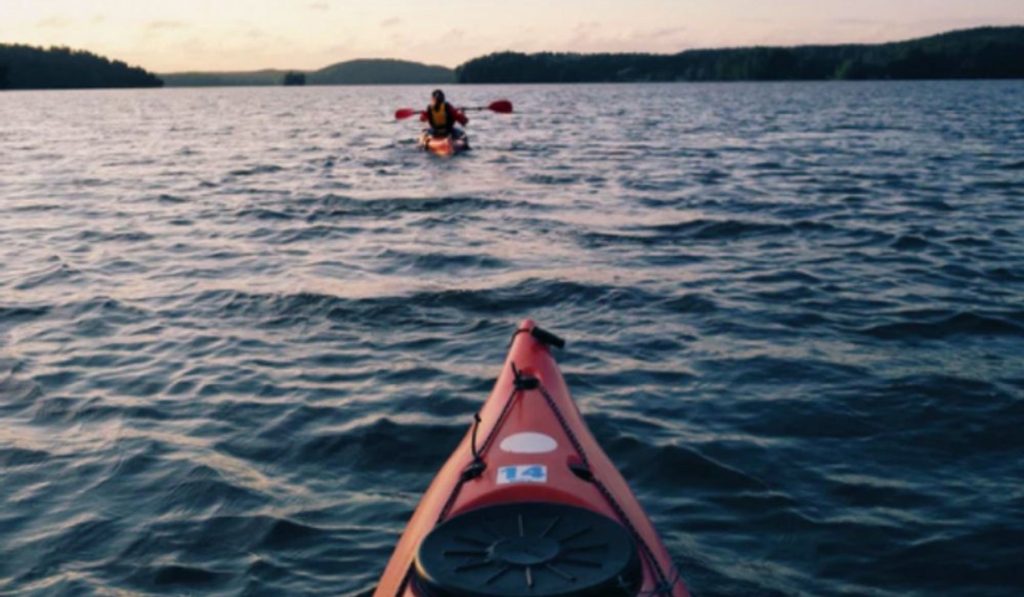
Choosing the Right Kayak
When it comes to choosing the right kayak, there are several factors to consider. The first decision you’ll need to make is what type of kayak you want. There are two main types to choose from – sit-in and sit-on-top kayaks.
Types of Kayaks
Sit-in kayaks are the more traditional option. They feature an enclosed cockpit that you sit inside. This design offers more protection from the elements and can be a good choice for colder weather or rougher waters. Sit-on-top kayaks, on the other hand, have an open cockpit where you sit on top of the kayak. These kayaks are generally more stable and easier to get in and out of, making them a popular choice for beginners.
Kayak Materials
Another important consideration when choosing a kayak is the material it is made from. Kayaks are commonly made from three main materials – plastic, fiberglass, and composite. Plastic kayaks are durable and affordable, making them a popular option for beginners. Fiberglass kayaks are lighter and more maneuverable, but also more expensive. Composite kayaks are the highest quality and offer superior performance, but they come with a higher price tag as well.
Size and Weight Considerations
The size and weight of your kayak are also important factors to consider. The length of the kayak will determine its speed and maneuverability. Longer kayaks are faster but can be harder to maneuver, while shorter kayaks are more agile but sacrifice some speed. Additionally, you’ll want to consider the weight capacity of the kayak to ensure it can safely support you and any gear you may bring along on your trips.
Essential Kayaking Gear
Once you have your kayak, it’s time to gather the essential gear you’ll need for a safe and enjoyable kayaking experience.
PFDs and Life Jackets
One of the most important pieces of gear is a personal flotation device (PFD) or life jacket. This is non-negotiable – you should never kayak without one. Ensure that it fits properly and is comfortable to wear for extended periods. A PFD will keep you afloat in the water and can be a lifesaver in case of an accident.
Paddles
A good paddle is essential for propelling your kayak through the water. Consider the material, weight, and length of the paddle. Find one that is comfortable to hold and suits your paddling style.
Sprayskirts
If you’re using a sit-in kayak, a sprayskirt is a useful accessory. It prevents water from splashing into the cockpit, keeping you dry and increasing your comfort on the water. Be sure to choose one that fits your kayak properly.
Bilge Pump and Sponge
To keep your kayak dry and prevent water from accumulating, a bilge pump and sponge are necessary. These tools allow you to remove any water that enters your kayak, keeping you afloat and safe.
Safety Equipment
In addition to a PFD, other safety equipment to consider includes a whistle, a signaling device, a flashlight, and a first aid kit. These items can be invaluable in emergencies or difficult situations.
Dry Bags
To protect your belongings from getting wet, dry bags are essential. These waterproof bags come in various sizes and can be used to store your clothes, food, and other items you want to keep dry while kayaking.
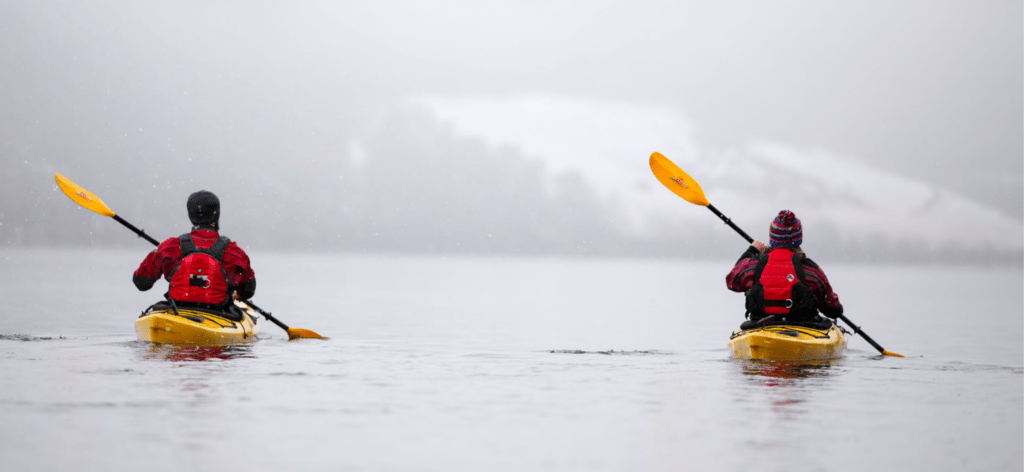
Kayaking Techniques and Skills
To enjoy your kayaking experience to the fullest, it’s important to learn some basic kayaking techniques and skills.
Proper Paddling Techniques
Mastering proper paddling techniques will make your kayaking more efficient and less tiring. This includes using your core strength, maintaining a relaxed grip on the paddle, and using a smooth and controlled stroke.
Forward Stroke
The forward stroke is the most fundamental paddling technique. It involves using a combination of torso rotation, arm movements, and paddle placement to propel your kayak forward.
Reverse Stroke
The reverse stroke is used to slow down, stop, or move backward. It is essentially the opposite motion of the forward stroke, with the paddle blade entering the water at the front of the kayak and pulling toward the back.
Sweep Stroke
The sweep stroke is a turning technique that is used to change direction. It involves sweeping the paddle from the front of the kayak to the back in a wide arc, which helps to turn the kayak smoothly.
Brace
A brace is a technique used to prevent the kayak from capsizing. It involves using the paddle as a stabilizing tool to maintain balance and support when the kayak is tilting.
Edging
Edging is a technique used to control the angle of the kayak. By tilting the kayak to one side, you can increase stability and maneuverability, especially in rough or choppy waters.
Eskimo Roll
The eskimo roll is an advanced technique used to right a kayak that has capsized while the paddler remains in the kayak. It requires practice and skill, and it’s recommended to learn this technique under the guidance of a qualified instructor.
Rescue Techniques
Knowing how to perform self-rescue and assisted rescue techniques is crucial for kayakers. These techniques allow you to safely exit and re-enter your kayak in the water, or help others in case of emergencies.
Planning a Kayaking Trip
Before embarking on a kayaking trip, it’s important to plan carefully to ensure a safe and enjoyable experience.
Choosing the Right Location
Consider the type of water you want to paddle on – whether it’s calm lakes, fast-flowing rivers, or coastal waters. Research potential locations and choose one that matches your skill level and preferences.
Checking the Weather
Always check the weather forecast before heading out on a kayaking trip. Avoid kayaking in stormy conditions, high winds, or when there are severe weather warnings.
Understanding Tides and Currents
If you’ll be kayaking in coastal or tidal areas, it’s essential to understand tides and currents. Be aware of the time and direction of the tides, as well as the strength of the currents. Plan your paddling accordingly to avoid unsafe or overly challenging conditions.
Safety Precautions
Before setting out, ensure that someone knows your paddling plans and when you expect to return. This is particularly important if you’re paddling alone. Additionally, always wear your PFD, take necessary safety equipment with you, and be aware of your surroundings at all times.
Packing Essentials
When packing for your kayaking trip, consider the duration of your outing, the weather conditions, and any specific gear you may need. Pack appropriate clothing, sunscreen, snacks, drinking water, a map, and any other necessary items.
Creating a Trip Itinerary
Creating a trip itinerary helps you stay organized and ensures you don’t forget any important details. Include information about the launch and landing points, anticipated paddling time, landmarks, rest stops, and any potential hazards or points of interest along the way.
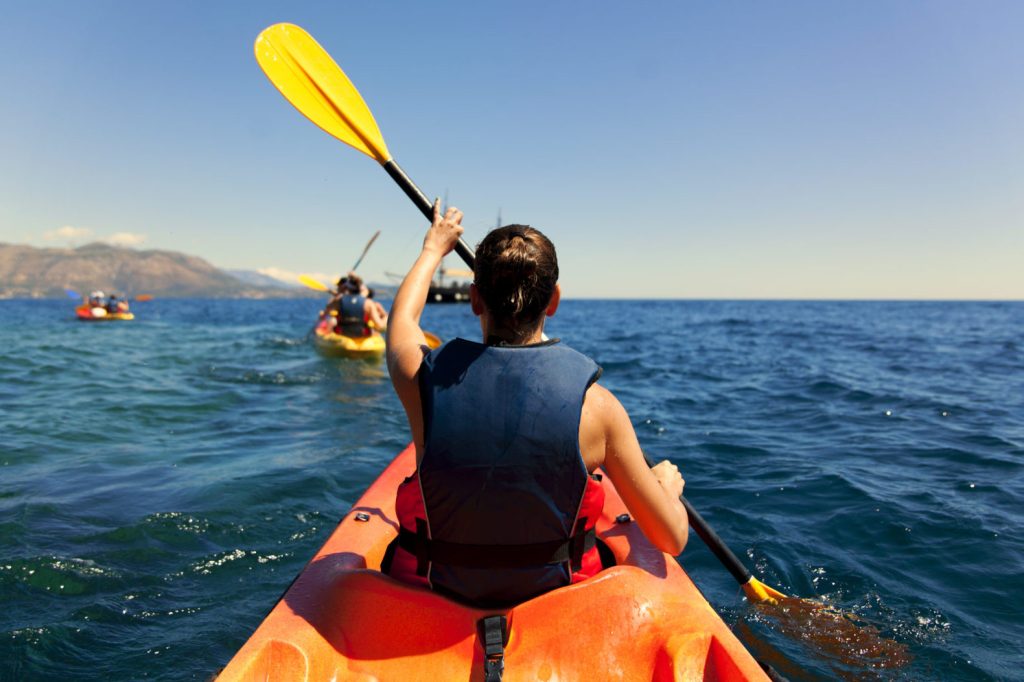
Launching and Landing a Kayak
Launching and landing a kayak can be tricky, especially if you’re new to the sport. Here are some tips to make the process smoother.
Carrying and Transporting the Kayak
When carrying your kayak, it’s best to have a partner to help distribute the weight. Lift the kayak by grabbing the cockpit rim, or use a kayak cart or shoulder straps if available. Secure the kayak properly to your vehicle using straps or a kayak rack to ensure safe transportation.
Launching Techniques
To launch your kayak, find a suitable spot where the water is calm and shallow. Place the kayak parallel to the water’s edge, ensuring it is fully floating before getting in. Sit down in the kayak, placing your paddle across the cockpit while you position yourself comfortably.
Landing Techniques
To land your kayak, find a safe spot where the water is shallow and free from obstacles. Approach the shore slowly, aiming to land parallel to the water’s edge. As you reach shallow water, lift your knees to help the kayak glide smoothly onto shore. Exit the kayak carefully, ensuring stability.
Navigating Different Water Conditions
Kayaking offers a range of water conditions to explore. Each condition requires varying skills and techniques to navigate safely.
Flatwater Kayaking
Flatwater kayaking is the most common type of kayaking and involves paddling on calm bodies of water such as lakes, ponds, or slow-moving rivers. This is an excellent starting point for beginners to develop their kayaking skills and explore serene natural environments.
Whitewater Kayaking
Whitewater kayaking involves paddling on fast-flowing rivers with turbulent water and challenging rapids. This type of kayaking requires advanced skills, knowledge of whitewater navigation, and the ability to perform maneuvers in fast-moving water.
Sea Kayaking
Sea kayaking allows you to explore coastal areas and ocean environments. It requires knowledge of tides, currents, and navigating open water. Sea kayaks are designed for stability and efficiency in choppy or rough conditions.
Kayak Fishing
Kayak fishing has gained popularity in recent years. It offers a unique and peaceful way to fish, accessing remote locations that may not be reachable by larger boats. Specialized fishing kayaks are available with features like rod holders, storage compartments, and stability for casting.
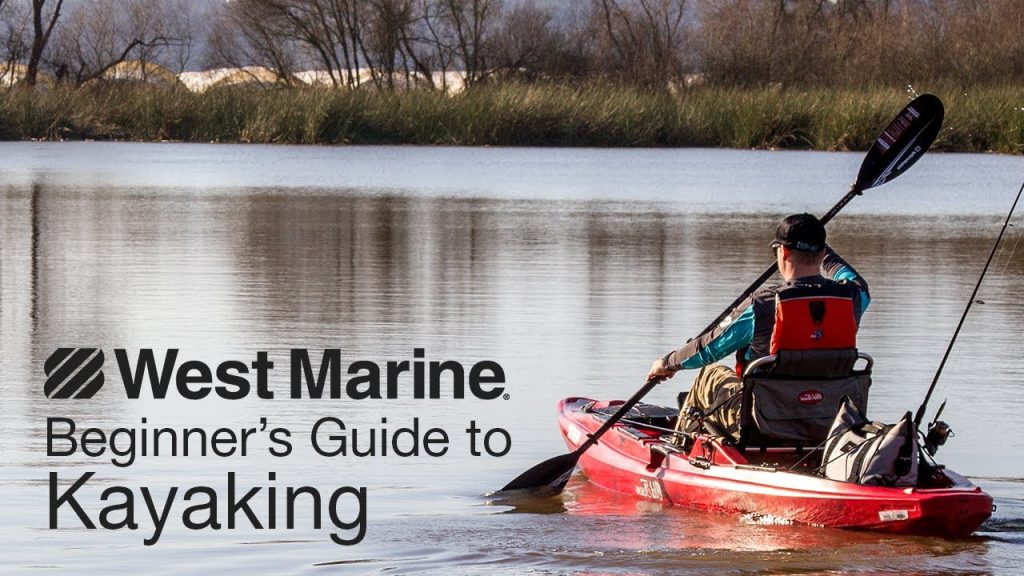
Kayak Maintenance and Storage
Taking care of your kayak is essential to ensure its longevity and performance.
Rinsing and Cleaning the Kayak
After each trip, rinse your kayak with fresh water to remove salt, sand, and any debris that may have accumulated. Use a mild soap or kayak cleaner to wash the kayak, and be sure to thoroughly dry it before storing.
Inspecting for Damage
Regularly inspect your kayak for any signs of damage, such as cracks, holes, or wear. If you notice any issues, address them promptly to prevent further damage or potential safety hazards.
Repairing Simple Damages
Minor damages, such as scratches or small cracks, can often be repaired yourself. There are various kayak repair kits available that include everything needed to fix common damages. Follow the instructions carefully and ensure the repairs are secure before using your kayak again.
Proper Storage and Transportation
When not in use, it’s important to store your kayak properly. Keep it in a cool, dry place, protected from direct sunlight and extreme temperatures. If you need to transport your kayak, use a kayak rack or trailer to secure it safely to your vehicle.
Safety and Rescue Tips
Safety should always be a top priority when kayaking. Here are some important safety and rescue tips to keep in mind.
Basic Safety Guidelines
Always wear your PFD, inform someone of your paddling plans, and be aware of your limitations. Avoid kayaking alone if possible, and pay attention to any rules or regulations specific to the area you’re paddling in.
Self-Rescue Techniques
Knowing how to perform a self-rescue can be invaluable in case you capsize. Techniques like the paddle float self-rescue or the cowboy rescue can help you get back into your kayak independently.
Assisted Rescue Techniques
Assisted rescues are used when you need help from others to get back into your kayak. The T-rescue and the Eskimo rescue are two common techniques that require another kayaker’s assistance.
Cold Water Kayaking
Cold water kayaking brings additional risks. It’s important to dress appropriately, wear a drysuit or wetsuit, and be prepared for the possibility of hypothermia. Practice cold water immersion and rescue techniques beforehand.
Navigation and Maps
Understanding how to navigate using charts and maps is essential for planning trips and safely exploring unfamiliar waters. Learn how to read nautical charts and use a compass or GPS to navigate accurately.
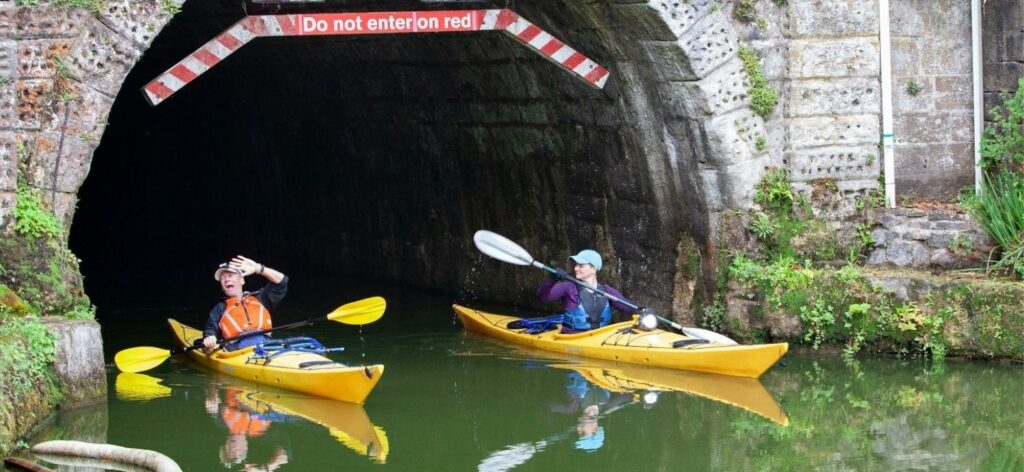
Kayak Camping Trips
Kayak camping combines the adventure of kayaking with the tranquility of camping. Here are some tips for planning a kayak camping trip.
Choosing a Campsite
Look for campsites along the water that are accessible by kayak. Consider factors such as scenery, shelter from wind, availability of fresh water sources, and regulations regarding overnight stays.
Packing for a Kayak Camping Trip
Keep your camping gear lightweight and compact. Opt for camping equipment designed for kayakers, such as collapsible utensils, lightweight tents, and compact cooking systems. Don’t forget essentials like food, water, cooking supplies, and appropriate clothing.
Setting up Camp
Once you arrive at your chosen campsite, secure your kayak and set up your tent. Choose a flat, level spot for your tent and be aware of the tides to avoid any issues with rising water levels. Follow Leave No Trace principles by minimizing your impact on the environment.
Cooking Techniques and Tips
When camping with a kayak, weight and storage space are limited. Consider using dehydrated or freeze-dried meals, as they are lightweight and easy to pack. Invest in a compact camping stove for cooking, and be sure to properly dispose of food waste so as not to attract wildlife.
Leave No Trace Principles
Preserving the natural environment is crucial when kayak camping. Follow Leave No Trace principles, which include packing out your trash, minimizing campfire impacts, respecting wildlife, and staying on designated trails.
Joining a Kayaking Community
Kayaking is not only a thrilling sport but also a way to connect with like-minded individuals and build friendships. Here are some ways to become part of a kayaking community.
Finding Local Kayaking Groups
Search for local kayaking groups or clubs in your area. Online platforms, social media, and community bulletin boards are great sources for finding fellow kayakers. Joining these groups is an excellent way to meet experienced paddlers and learn from their knowledge.
Participating in Organized Events
Many kayaking communities organize events and outings for members to join. These may include group paddles, races, or skill-building workshops. Participating in these events not only enhances your kayaking abilities but also allows you to build connections with fellow enthusiasts.
Taking Kayaking Lessons
If you’re new to kayaking or want to improve your skills, consider taking kayaking lessons. Look for certified instructors who can teach you proper techniques, safety practices, and advanced skills. These lessons can be a valuable investment in your kayaking journey.
Sharing Experiences and Knowledge
Finally, share your experiences and knowledge with others. Share photos, stories, and tips on social media or in online kayaking forums. Be open to learning from others and engaging in discussions that contribute to the kayaking community.
By following these steps, you’ll be well on your way to becoming a skilled and knowledgeable kayaker. Remember to always prioritize safety, respect the environment, and have fun exploring the vast and beautiful waterways that kayaking opens up to you. Happy paddling!

